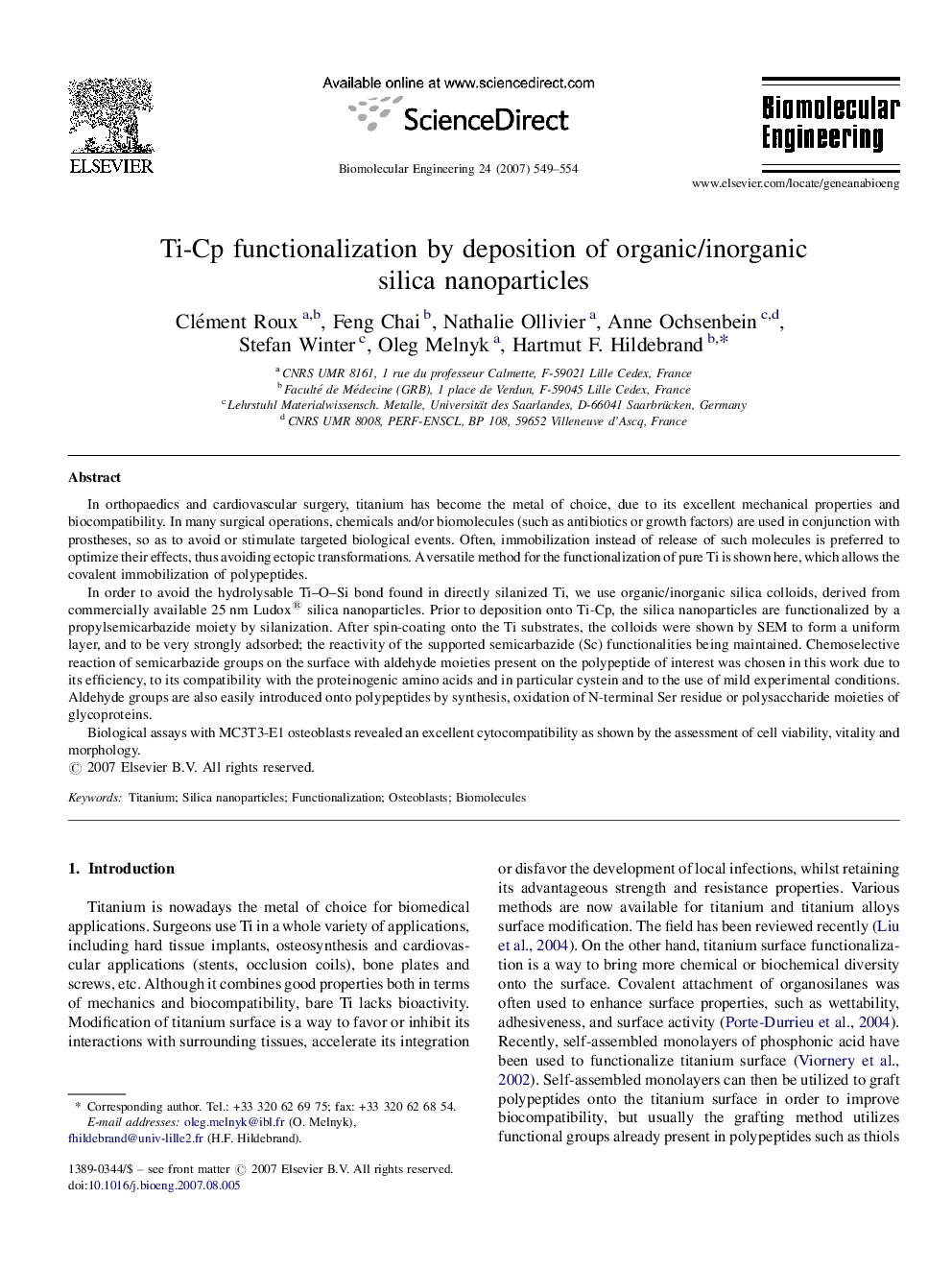| Article ID | Journal | Published Year | Pages | File Type |
|---|---|---|---|---|
| 14141 | Biomolecular Engineering | 2007 | 6 Pages |
In orthopaedics and cardiovascular surgery, titanium has become the metal of choice, due to its excellent mechanical properties and biocompatibility. In many surgical operations, chemicals and/or biomolecules (such as antibiotics or growth factors) are used in conjunction with prostheses, so as to avoid or stimulate targeted biological events. Often, immobilization instead of release of such molecules is preferred to optimize their effects, thus avoiding ectopic transformations. A versatile method for the functionalization of pure Ti is shown here, which allows the covalent immobilization of polypeptides.In order to avoid the hydrolysable Ti–O–Si bond found in directly silanized Ti, we use organic/inorganic silica colloids, derived from commercially available 25 nm Ludox® silica nanoparticles. Prior to deposition onto Ti-Cp, the silica nanoparticles are functionalized by a propylsemicarbazide moiety by silanization. After spin-coating onto the Ti substrates, the colloids were shown by SEM to form a uniform layer, and to be very strongly adsorbed; the reactivity of the supported semicarbazide (Sc) functionalities being maintained. Chemoselective reaction of semicarbazide groups on the surface with aldehyde moieties present on the polypeptide of interest was chosen in this work due to its efficiency, to its compatibility with the proteinogenic amino acids and in particular cystein and to the use of mild experimental conditions. Aldehyde groups are also easily introduced onto polypeptides by synthesis, oxidation of N-terminal Ser residue or polysaccharide moieties of glycoproteins.Biological assays with MC3T3-E1 osteoblasts revealed an excellent cytocompatibility as shown by the assessment of cell viability, vitality and morphology.
